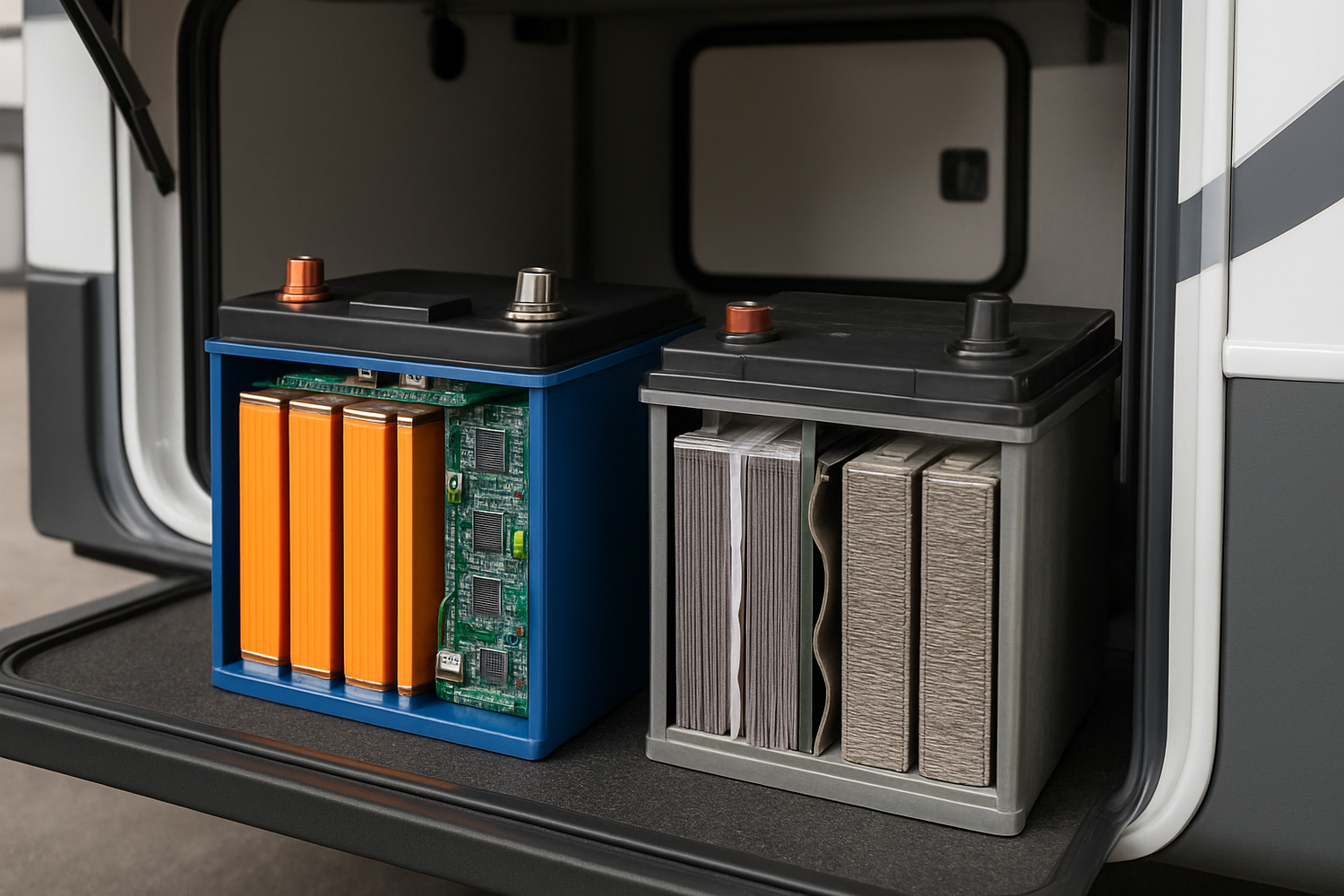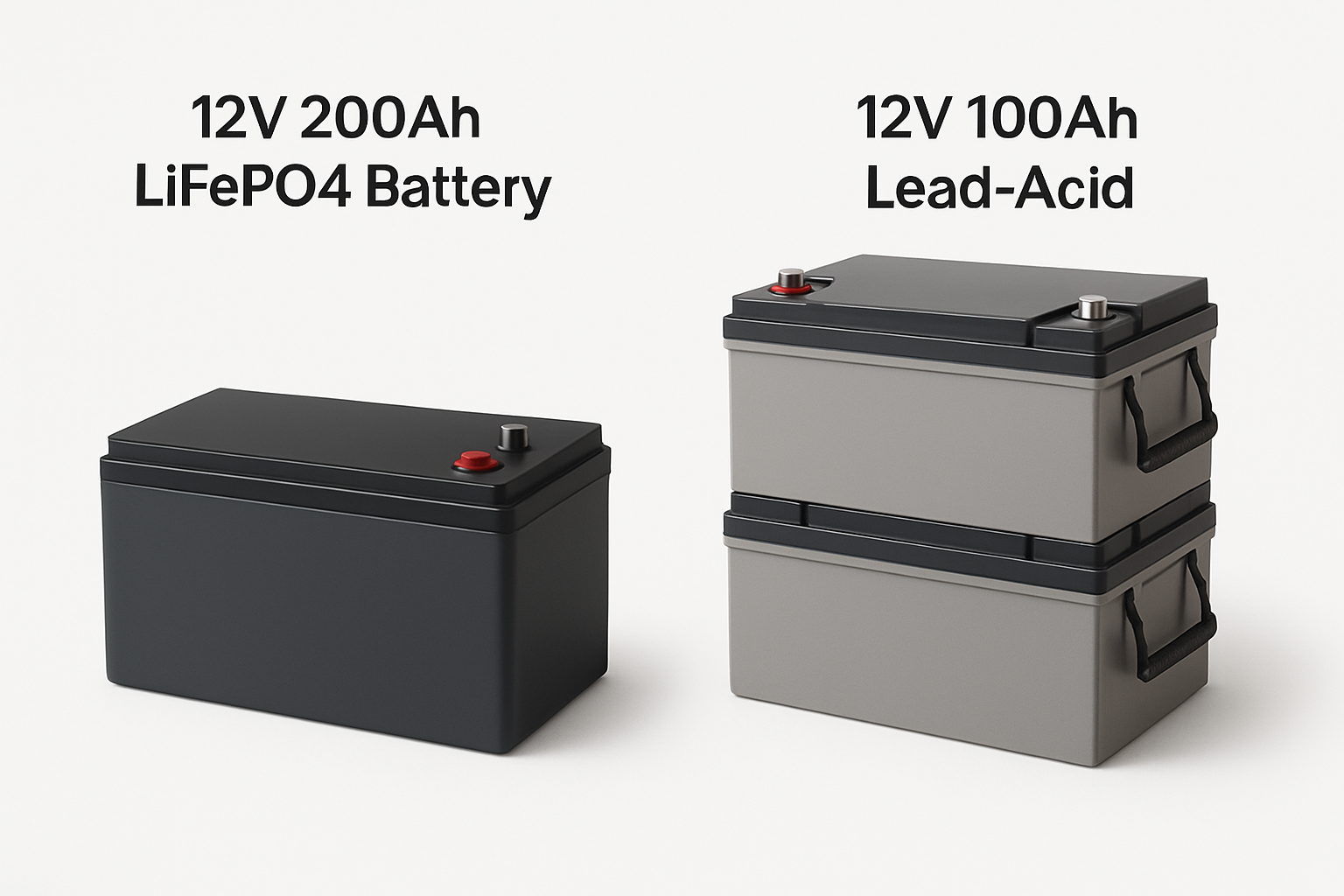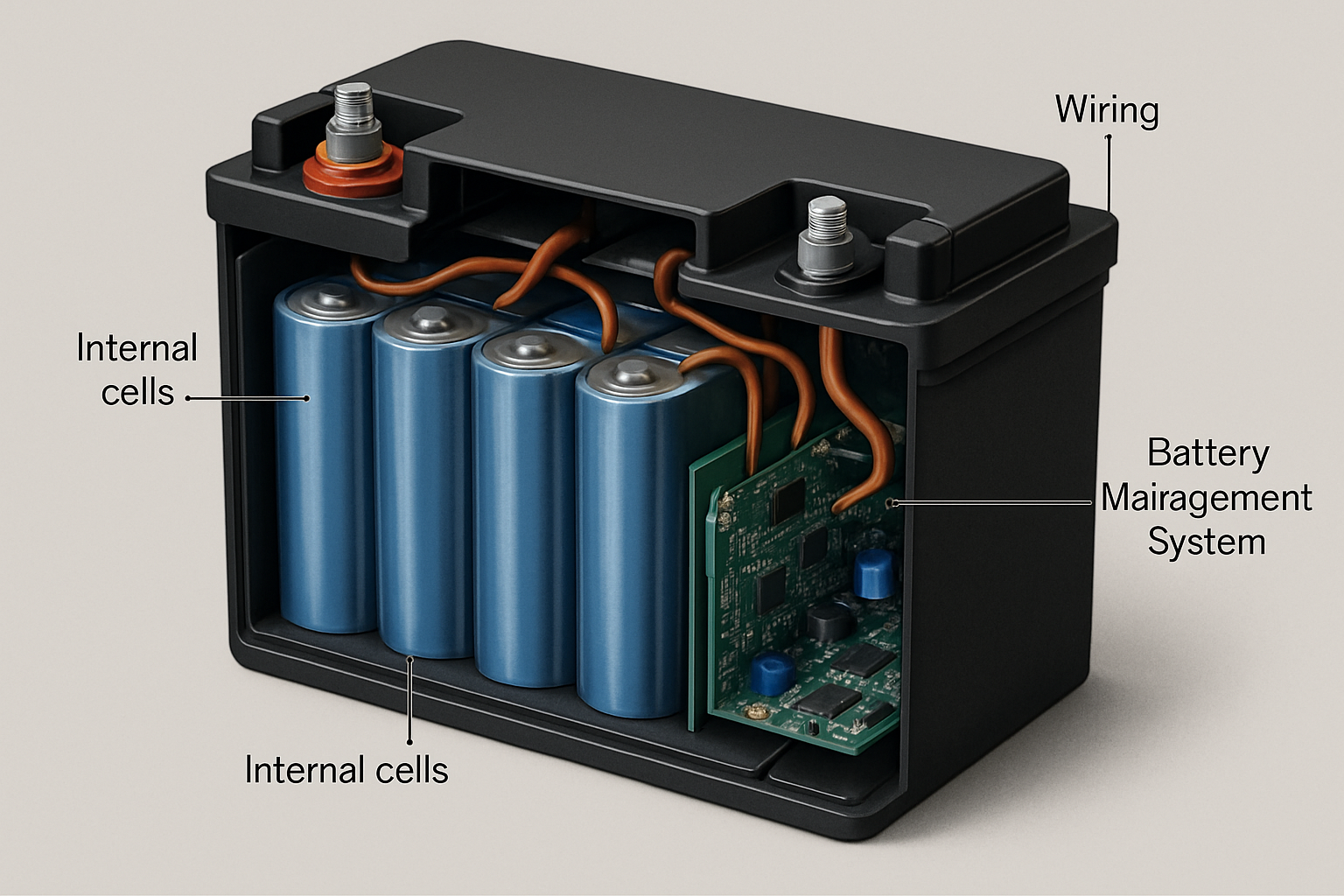Choosing the right deep cycle battery for your recreational vehicle is a critical decision that impacts your freedom on the road. The battery is the heart of your RV's electrical system, powering everything from lights and appliances to essential electronics. Two of the most prominent technologies in this space are Lithium Iron Phosphate (LiFePO4) and Absorbent Glass Mat (AGM). This article provides a detailed RV battery comparison to help you determine which option aligns with your power needs and travel style.
Understanding the Core Technologies: LiFePO4 and AGM
Before comparing them, it's useful to understand the fundamental differences in their chemistry and construction. Both are designed for deep, repetitive cycling, but they achieve this in very different ways.
What is a LiFePO4 Battery?
A LiFePO4 battery is a type of lithium-ion battery known for its exceptional safety and long service life. The chemistry uses iron phosphate in the cathode, which is more stable than the cobalt oxide found in batteries for consumer electronics. This stability makes the lithium iron phosphate battery 12v an excellent choice for demanding applications like RVs and off-grid solar energy storage systems. They are lightweight and can deliver consistent power across most of their discharge cycle.
What is an AGM Battery?
AGM batteries are an advanced type of lead-acid battery. Instead of having free-flowing liquid electrolyte, the electrolyte is absorbed and held in fine fiberglass mats. This design makes them spill-proof and vibration-resistant, a significant improvement over traditional flooded lead-acid batteries. They are sealed, require no watering, and are known for their reliability and ability to deliver high current bursts.
Head-to-Head Comparison: Key Performance Metrics for RVs
When powering an RV, not all batteries perform equally. Key metrics such as lifespan, usable energy, weight, and charging efficiency directly influence your experience off-the-grid.
Lifespan and Cycle Count
A battery's lifespan is measured in charge cycles. A LiFePO4 battery typically offers between 2,000 to 5,000 cycles, and sometimes more depending on usage. In contrast, an AGM deep cycle battery generally provides 300 to 1,000 cycles. According to a report from the International Energy Agency, LFP (LiFePO4) chemistry offers high durability with up to 2,000 full cycles while maintaining performance. This extended lifespan makes LiFePO4 a more durable long-term investment.
Depth of Discharge (DoD) and Usable Energy
Depth of Discharge refers to the percentage of the battery's capacity that has been used. LiFePO4 batteries can be safely discharged to 80-100% of their capacity without significant degradation. AGM batteries, however, should only be discharged to about 50% to preserve their lifespan. This means a 100Ah lithium ion deep cycle battery provides nearly double the usable energy of a 100Ah AGM battery. As noted in the Innovation Outlook: Smart charging for electric vehicles, applications that support renewable energy absorption require a high depth of discharge tolerance, a characteristic where lithium-ion technologies excel.
Weight and Space Efficiency
Weight is a constant consideration in an RV. LiFePO4 batteries are typically less than half the weight of AGM batteries of the same amp-hour rating. For example, a 12v 100ah lithium ion battery might weigh around 25 pounds, while its AGM counterpart could exceed 60 pounds. This weight reduction can improve fuel efficiency and free up valuable payload capacity for other gear.
Charging Speed and Efficiency
LiFePO4 batteries have a much higher charge efficiency, typically over 95%. They can also accept a higher charge current, allowing them to recharge much faster than AGM batteries, whose efficiency is closer to 85%. The last 15-20% of charging an AGM battery can be particularly slow. Faster charging is a significant advantage when you're relying on limited solar power or generator run-time.
The Financial Equation: Upfront Cost vs. Long-Term Value
The initial price is often a primary factor in any purchasing decision. While AGM batteries have a lower entry cost, a complete analysis reveals a more complex financial picture.
Initial Investment
There is no question that AGM batteries are cheaper to purchase upfront. A quality AGM deep cycle battery can cost significantly less than a LiFePO4 battery with the same capacity rating. This lower initial expense makes AGM an attractive option for RVers on a strict budget or those who use their vehicle infrequently.
Calculating the Total Cost of Ownership
To assess the true value, you should calculate the cost per cycle. Divide the battery's price by its expected number of cycles. When you do this, the LiFePO4 battery often emerges as the more economical choice over its lifespan due to its vastly superior cycle count. Its higher efficiency and greater usable capacity also contribute to its long-term value. For a comprehensive look at how battery performance impacts your system, the Ultimate Reference for Solar Storage Performance offers valuable data and comparisons.
| Feature | LiFePO4 Battery | AGM Battery |
|---|---|---|
| Typical Lifespan | 2,000 - 5,000 cycles | 300 - 1,000 cycles |
| Usable Capacity (DoD) | 80% - 100% | 50% |
| Weight (100Ah) | ~25 lbs / 11 kg | ~65 lbs / 29 kg |
| Charging Efficiency | >95% | ~85% |
| Upfront Cost | Higher | Lower |
| Maintenance | None | None |
Safety and Maintenance Considerations
Both battery types are considered safe for RV use, but they have different internal mechanisms and maintenance profiles.
Built-in Safety: The Role of the BMS in LiFePO4
Every quality LiFePO4 battery includes an integrated Battery Management System (BMS). This electronic circuit board is the brain of the battery, protecting it from overcharging, over-discharging, extreme temperatures, and short circuits. The BMS ensures the cells remain balanced and operate within safe parameters, which is a key reason for their reliability and long life.
Maintenance Requirements for AGM and LiFePO4
Both technologies are essentially maintenance-free. Neither requires adding distilled water like traditional flooded batteries. AGM batteries are sealed and cannot be serviced. LiFePO4 batteries are also sealed units managed by their internal BMS. The primary consideration for both is to operate them within their specified temperature ranges and ensure your RV's charging system is compatible.
Making the Right Choice for Your RV Lifestyle
Ultimately, the best 12v lithium battery for an RV depends on your specific needs. If you are a full-time RVer, frequently camp off-grid, and rely heavily on your electrical system, the superior performance, long lifespan, and light weight of a LiFePO4 battery present a compelling case. The higher initial investment is often justified by its long-term value and reliability. For weekend travelers or those who mostly stay in campgrounds with electrical hookups, an AGM battery can be a perfectly adequate and more budget-friendly solution. It provides reliable power for moderate use without the higher upfront cost of lithium technology.
Frequently Asked Questions
Can I replace my AGM battery directly with a LiFePO4 battery?
In many cases, yes, but it requires careful consideration. You must ensure your RV's converter/charger is compatible with the charging profile of a LiFePO4 battery. Some older chargers may not be suitable. It is often recommended to upgrade your charging system to one with a specific lithium setting to maximize the battery's performance and lifespan.
Do LiFePO4 batteries work in cold weather?
Standard LiFePO4 batteries can have issues charging in freezing temperatures (below 32°F or 0°C). The BMS will typically prevent charging to protect the cells. However, they can still discharge power in the cold. Many manufacturers now offer heated LiFePO4 batteries that use a small amount of their own energy to warm the cells before charging, making them suitable for four-season use.
Are LiFePO4 batteries safe for RVs?
Yes, LiFePO4 is one of the safest lithium battery chemistries available. The phosphate-based cathode material is thermally and chemically stable, making it far less prone to thermal runaway than other lithium-ion chemistries. The integrated BMS adds another critical layer of safety, making them a very reliable power source for mobile applications.





Leave a comment
All comments are moderated before being published.
This site is protected by hCaptcha and the hCaptcha Privacy Policy and Terms of Service apply.